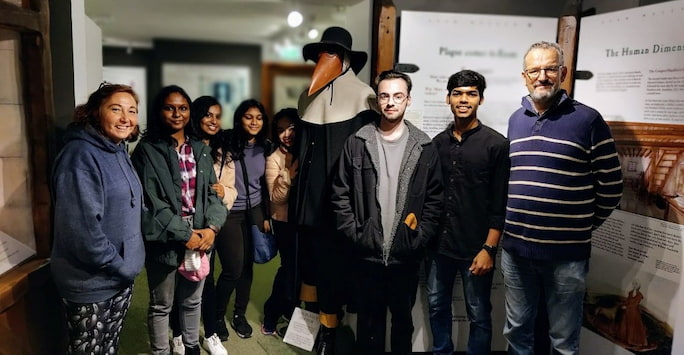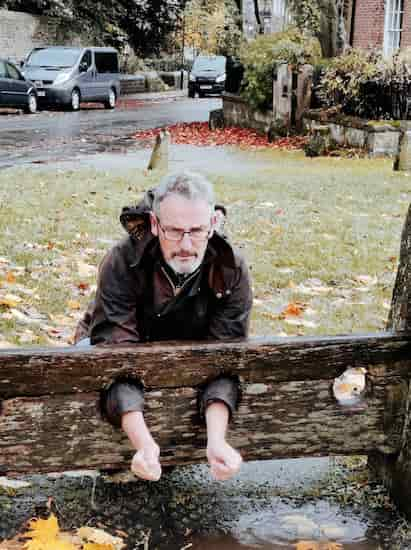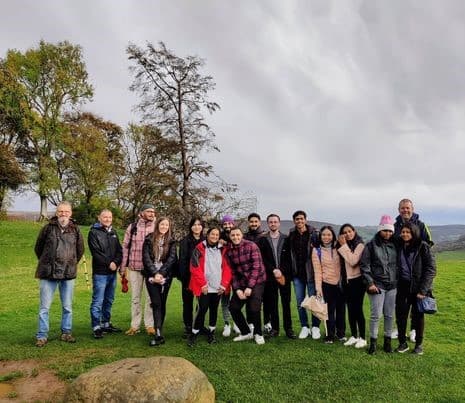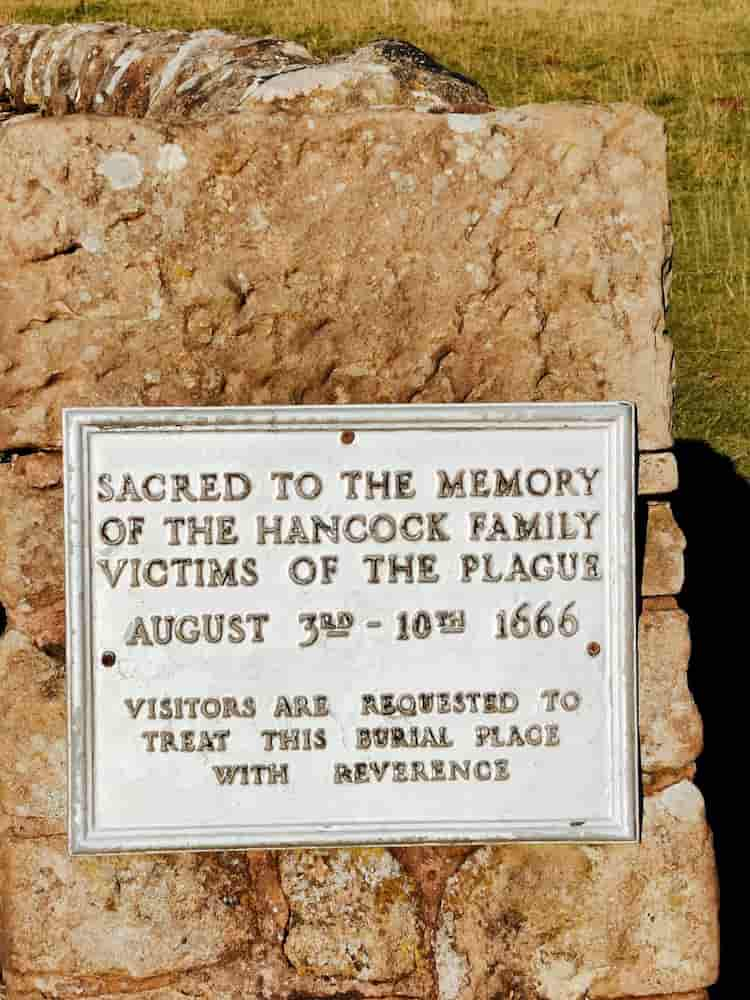
On Sunday 30th Matthew Baylis, Nicola Williams, Georgios Pollakis and Bill Paxton took students from our MSc in Infection and Immunity on a trip to Eyam, Derbyshire.
Eyam is famous for the sacrifice its residents made when plague hit their village in the September of 1665. Despite knowing that many of the villagers would not survive, they quarantined themselves from the outside world to stop the onward spread of plague. Over a quarter of the villagers died during 14 months.
The students’ first stop was Eyam Museum which takes visitors on a journey from plague-ridden London to it reaching Eyam, and then the timeline and impact on the village. This included a nice example of an epidemic curve which provoked discussion on apparent seasonality and mortality rates. There was also an informative pictogram displaying all the households in the village, showing who died of plague and who survived. There has been investigation of the descendants of survivors linking survival to the delta-32 mutation, a mutation in the CCR5 receptor which is also the mutation linked to resistance to HIV infection. Luckily, we had the person with us who discovered the mutation and Bill was able to explain to us why this mutation was unlikely to be solely responsible for enabling those exposed to plague to survive.
Part of the group visiting the museum and standing next to a doctor with the 17th century equivalent of PPE!
Another interesting aspect of the museum was the comparison between plague and the more recent pandemic of COVID. This was highlighted when we visited the village church and met the current vicar who gave us a tour and informed us that he was the second vicar in the history of the village to close the church doors due to a pandemic.

There was time to eat lunch and also to put Matthew in the stocks before we walked to the boundary stone. This is where the Eyam villagers would leave their money, which was placed in holes within the stone which were filled with vinegar and neighbouring villagers would leave food in exchange.

The final part of the day involved a walk to the Riley graves, where Elizabeth Hancock sadly had to bury her husband and six children over the space of a week, which really brings home the human cost of plague to the village of Eyam.

We were lucky at this point that the rain had subsided and the sun came out as we walked back to the village to return home.